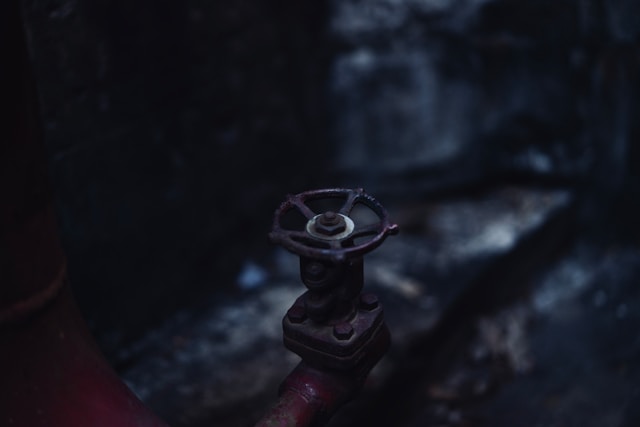Table of Contents
- The Shift Toward Sustainable Manufacturing
- Materials Making a Difference
- Challenges in Adopting Green Plastics
- Injection Molding Techniques for Eco-Friendly Plastics
- Design for Sustainability
- Regulations and Industry Standards
- Economical Impacts of Switching to Green Plastics
- Technological Advancements in Green Injection Molding
- Case Studies: Industry Leaders in Sustainability
- The Future of Plastic Injection Molding
Key Takeaways
- Recognizing the need for environmental strategies within the plastic industry.
- Exploring advancements in sustainable materials designed to replace traditional plastics.
- Understanding the role of regulations and consumer demand in shaping industry practices.
- Anticipating the technological future of the industry that prioritizes sustainability.
The Shift Toward Sustainable Manufacturing
The plastic manufacturing sector is witnessing an ecological revolution, with environmental impact awareness at its core. Traditional plastic production has faced increasing scrutiny due to its long-term detrimental effects on the ecosystem. In response, countless businesses, including those specializing in injection mold manufacturing, have pivoted towards greener alternatives. This transformative shift isn’t just about substituting one material for another; it embodies an entire reinvention of manufacturing ethos, embracing eco-friendly resources and processes.
Moreover, innovative breakthroughs and consumer demand for environmentally conscious products drive this seismic shift towards sustainable practices. Companies no longer see sustainability as an optional add-on but as an essential aspect of their business model that can provide a competitive edge in a rapidly evolving market.
Materials Making a Difference
The conversation around plastic alternatives often leads to comparing biodegradable and compostable plastics. While both terms suggest environmental friendliness, they represent different end-of-life degradation processes. Biodegradable plastics will break down under specific conditions often facilitated by microorganisms, whereas compostable plastics require an industrial composting setting to degrade fully and safely. Distinguishing between these two is crucial as they call for different disposal methods to reduce plastic waste in landfills and oceans.
Bio-based plastics offer exciting advancements, promising a sustainable future with less dependence on fossil fuels. These materials can be sourced from organic substances such as plants, which absorb carbon dioxide as they grow, offsetting the emissions typically associated with plastics. The dive into bio-based plastics is not just a green wave; it’s a potential solution that aligns with the circular economy’s ideals, eliminating waste and continually reusing resources.
Challenges in Adopting Green Plastics
The widespread integration of eco-friendly plastics into existing manufacturing systems presents various challenges. Primarily, these challenges manifest themselves in hesitation on the part of businesses regarding the transition. There are concerns about the performance attributes of eco-friendly materials, such as their durability, resilience, and suitability for diverse applications when compared to their traditional counterparts. Financial constraints and market readiness also play critical roles as companies assess the feasibility and risk of shifting toward green plastics.
Addressing these hurdles requires ongoing education and transparency in the industry as well as realistic expectations about the developmental and adoption phases of greener materials. Companies must be innovative and resilient, adapting their operational and strategic frameworks to leverage the emergent opportunities in sustainable plastic production fully.
Injection Molding Techniques for Eco-Friendly Plastics
Migrating to eco-friendly materials necessitates a thorough review and potential overhaul of conventional injection molding techniques. Injection molding, a cornerstone process in plastics manufacturing, involves injecting molten material into a mold to form parts. Adjustments to pressure, temperature, and cycle times must be meticulously managed to accommodate bio-resins or recycled materials. These changes are technical requirements and a part of the industry’s stewardship towards an environment-first approach.
Adaptation extends to the very design of the tools used in injection molding, which must account for the particular characteristics of sustainable plastics. This could range from altering the mold design for optimal flow to integrating features that facilitate using recycled material. The nuance of these modifications often requires a deep understanding of the material properties and a collaborative effort between designers, engineers, and the sustainability department.
Design for Sustainability
The environmental vessel of the plastic industry sails forward not only on the tide of new materials but also on innovative product design strategies. ‘Design for sustainability’ reflects a comprehensive approach that shapes everything from the selection of materials to the manufacturability and life cycle of the product. It’s an ideology that promotes minimal usage of resources, maximum functionality, and straightforward disassembly and recycling.
Products designed with sustainability foster positive environmental impacts and a stronger connection with the eco-aware consumer. Manufacturers who embed eco-design philosophies into their development cycle will likely see enhanced customer loyalty, access to new markets, and compliance with green stipulations – all of which are becoming increasingly significant in a socially conscious marketplace.
Regulations and Industry Standards
Legislation often serves as a catalyst for industry evolution, compelling companies to revisit and reinvent established practices. In the realm of plastics, regulatory bodies across the globe have introduced a range of guidelines aimed at increasing recycling rates, reducing pollution, and encouraging the adoption of eco-friendly materials. These regulations necessitate compliance and drive innovation as manufacturers seek to meet or exceed the standards.
On top of statutory requirements, industry standards and certifications provide frameworks that benchmark sustainability efforts, allowing companies to substantiate their environmental claims with recognized accreditations. Such benchmarks help navigate the regulatory landscape and serve as a beacon for consumers seeking products that align with their values.
Economical Impacts of Switching to Green Plastics
Adopting green plastics has economic implications for businesses, communities, and the environment. While short-term costs associated with the transition to sustainable materials might seem daunting, the long-term financial benefits can be substantial. These benefits extend beyond the tangible cost savings from reduced waste and energy consumption to less apparent gains such as customer goodwill and brand differentiation.
Importantly, governments and institutions are increasingly providing economic incentives for sustainable practices. These incentives – ranging from tax breaks and grants to subsidies for research and development – can significantly lower the barriers to entry for companies looking to integrate green materials into their production lines. Such economic stimuli can accelerate the adoption of sustainable practices, ultimately contributing to a resilient, green economy.
Technological Advancements in Green Injection Molding
Technological advancements have a profound capacity to facilitate the adoption of eco-friendly plastics in injection molding. Innovations in material science have given rise to a new generation of polymers that balance functionality with environmental responsibility. These advancements go hand in hand with developing injection molding equipment designed to process eco-materials efficiently.
Furthermore, the cutting-edge area of 3D printing is complementing traditional manufacturing methods. 3D printing technology harbors immense potential to reduce waste and energy use within the plastic industry. The capacity to manufacture complex components without the need for traditional tooling represents a paradigm shift that further reduces the environmental impact of plastic manufacturing.
Case Studies: Industry Leaders in Sustainability
Examples abound of industry leaders who have carved out a niche by placing sustainability at the forefront of their operations. These pioneers demonstrate how a commitment to environmental stewardship is possible and profitable. Through a range of case studies, we can explore the strategies employed by such companies, including their engagement in complete lifecycle assessments, development of closed-loop systems for material use, and pushing the boundaries of what’s considered achievable with sustainable materials.
The Future of Plastic Injection Molding
Looking ahead, the future of plastic injection molding is heavily influenced by the ongoing development of sustainable materials and methods. With the drive for a greener future, industry players anticipate continuing changes in consumer demand, regulatory landscapes, and technological capabilities. We are poised on the cusp of a new era in manufacturing where innovation will necessarily integrate environmental concerns.
Significant research, such as the study featured in Nature, underscores the delicate balance that must be achieved between environmental sustainability and industrial application of bio-based plastics. According to ScienceDirect, the industry is keenly attuned to the evolving consumer sentiment favoring products crafted with the planet in mind. These insights point to an eco-conscious transformation where injection molding not only molds materials but also shapes a sustainable future for all.

 Keeping Your Hearth in Top Shape: The Value of Routine Fireplace Repair
Keeping Your Hearth in Top Shape: The Value of Routine Fireplace Repair  Septic Systems: Maintenance Tips for Homeowners
Septic Systems: Maintenance Tips for Homeowners  Timeless Elegance: A Guide to Buying Your First Antique Shelf Clock
Timeless Elegance: A Guide to Buying Your First Antique Shelf Clock  Fostering Tranquility: Infusing Personal Well-Being into Home Renovation Ventures
Fostering Tranquility: Infusing Personal Well-Being into Home Renovation Ventures 


